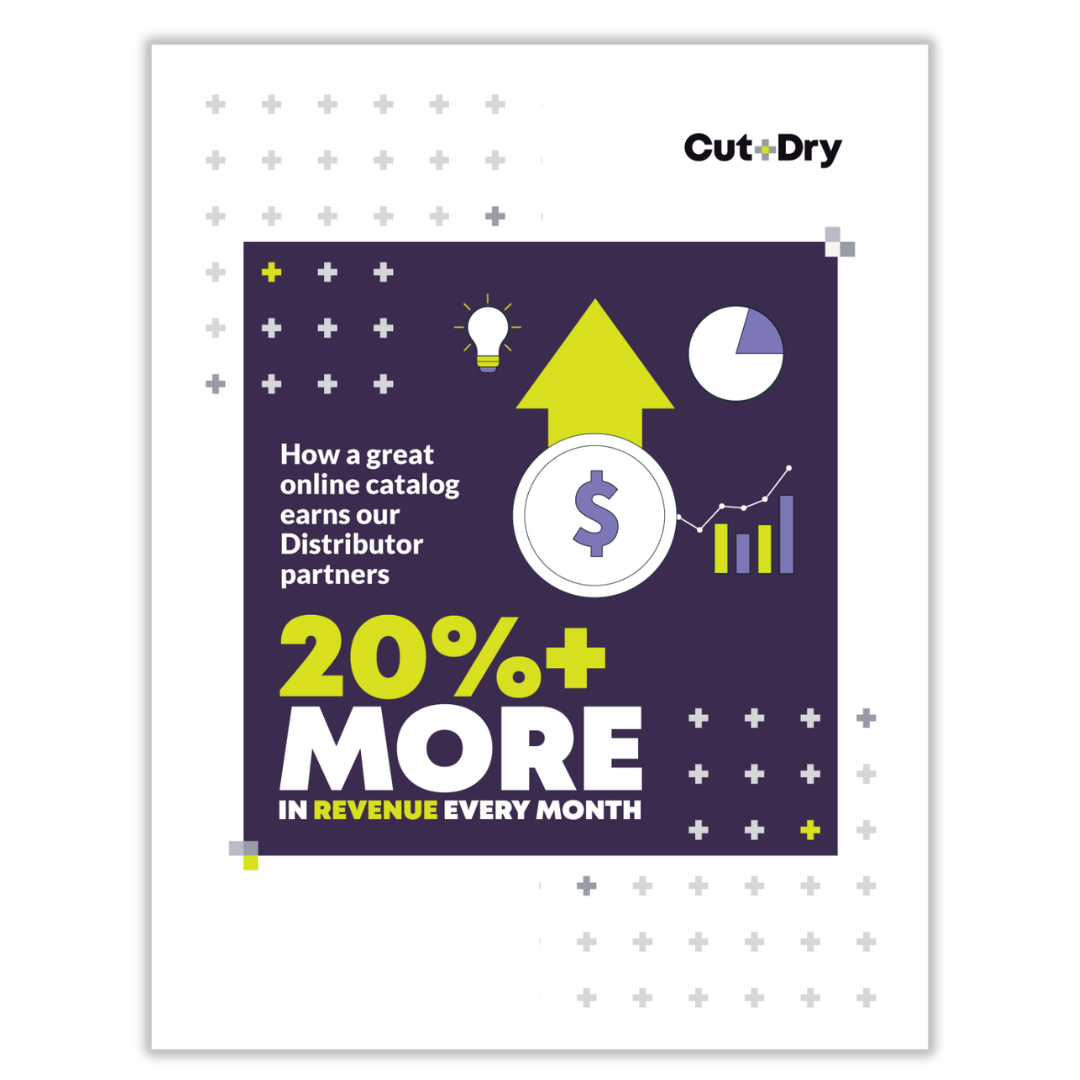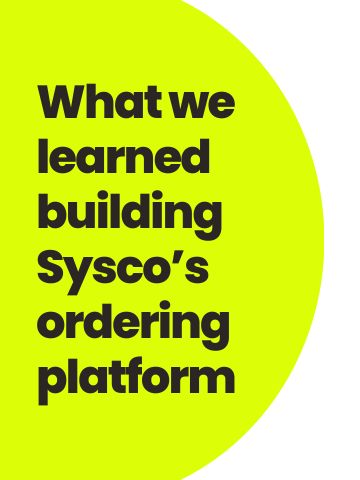Your e-commerce website is much more than an online business card. For distributors, a well-designed and functional e-commerce website can make operations smooth, increase sales, and improve customer satisfaction. But what does a successful distributor’s e-commerce website need? It’s not just about looking good—it’s about providing your customers with a seamless experience that helps them get what they need, quickly and easily - and keeps them coming back for more!
Here, we’ll dive into the must-have features every distributor should prioritize on their e-commerce website, and how each one can bring value to your business and customers alike. Let’s take a closer look at the essential elements that make up a well-rounded and effective e-commerce website.
1. Easy-to-Use Product Search and Filtering
Imagine a customer visiting your site, looking for a specific product from a specific category. If they can’t find it fast, they’ll probably give up and head somewhere else. A good product search and filter system allows users to zero in on exactly what they need without fuss. Here are a few tips on what this feature should include:
- Smart Search Bar: Autocomplete or suggested search terms can speed up the search process for customers who may not know the exact product name but have an idea of what they’re after. Even typos don’t matter.
- Advanced Filters: Let customers filter by category, brand, price range, or availability. Filters specific to your industry (such as food category or type for a foodservice distributor) will help them refine their search and avoid feeling overwhelmed by options.
When the search and filtering tools are smooth and intuitive, your customers will find what they need faster, which translates to happier clients and more sales.
2. Accurate, Real-Time Inventory Display
Your customers rely on up-to-date information to make buying decisions. Showing real-time inventory on your e-commerce website ensures that customers know what’s in stock and can avoid any unnecessary surprises after ordering. Here’s why this is key:
- Reduces Customer Frustration: Imagine placing an order, only to find out that half of it is on backorder. Avoiding this frustration is as simple as displaying live inventory levels on your site.
- Encourages Orders: When customers see limited stock warnings, they’re more likely to make a purchase immediately rather than delay.
Real-time inventory visibility can streamline your ordering process and allow customers to trust that they’re getting exactly what they need.
3. Easy Ordering and Reordering Capabilities
Making orders—and reorders—as simple as possible should be a top priority. By enabling customers to order with just a few clicks, you’ll make their lives easier and ensure they’ll keep coming back to you.
- Order Guides: For returning customers, an order guide lets them quickly scan their frequently ordered items and quantities and adjust as needed without having to pick them out again and again..
- Reorder Options: Allow customers to view their order history and reorder frequently purchased items with ease. For a busy restaurant manager who orders weekly, being able to reorder their usual supplies with just a few clicks is a massive time-saver.
Investing in intuitive ordering options shows your customers that you understand their needs and respect their time, which fosters loyalty.
4. Detailed Product Information and High-Quality Images
Product information is your chance to educate your customers, especially when they’re not speaking to a salesperson. Offering comprehensive details and clear images can lead to better-informed buying decisions and fewer returns.
- Descriptions with Key Details: Include details like product dimensions, materials, ingredients, and certifications. For instance, if your products are designed for foodservice, specific information like shelf life and storage requirements can be invaluable.
- Product Discoverability: A well-populated catalog of products makes it much easier for customers to discover products that they probably didn’t even know you carried. For distributors with a large catalog of products, this can be a game-changer to drive more business from existing customers. Based on customer interest and purchase history you can also recommend or suggest other products they may wish to purchase.
- High-Quality Images and 360-Degree Views: A clear, high-quality image often speaks more than words. 360-degree views let customers inspect every angle, which is especially useful for items where appearance or specific features are important. This way they know exactly what they are getting instead of having to imagine it.
The more information customers have at their fingertips, the more likely they’ll be to purchase—and to purchase confidently. It also means that customer expectations align with the product they receive so there is more room for customer satisfaction.
5. Customer-Specific Pricing and Account Management
Pricing is rarely a one-size-fits-all game for distributors. By integrating customer-specific pricing into your e-commerce website, you show customers that they’re valued, while also keeping everything organized on the back end.
- Logged-In Price Views: Display prices specific to the customer once they log in. This shows that your business understands their unique needs and offers them customized pricing options.
- Order Management Dashboard: Give customers a dashboard where they can see their previous orders, invoices, and any outstanding balances.
By enabling customer-specific pricing and accounts, you’re making it easier for customers to track their own purchasing habits and get exactly what they need at the right price.
6. Mobile-Friendly Interface
An e-commerce website that isn’t mobile-friendly could be a dealbreaker, as many customers are managing their orders from their phones or tablets. Your website should be able to match the level of convenience that customers expect.
- Responsive Design: Ensure your e-commerce website adjusts smoothly to any screen size, making it easy to browse on-the-go.
- Optimized Navigation: Mobile screens are smaller, so simplifying the navigation options for mobile users is essential.
A mobile-friendly interface keeps customers engaged and ensures they can work from anywhere, without needing a desktop.
7. Educational Resources and Support Tools
A little guidance can go a long way, especially for customers who may need help understanding your products or want tips on how to get the best results.
- Product Guides, Blogs, and Videos: These can act as a resource hub for customers. For example, a distributor offering products for restaurants could include tips on maximizing certain ingredients or choosing the best products for specific needs.
- Live Chat and FAQ Section: Give customers a way to ask quick questions or troubleshoot. A live chat function or comprehensive FAQ section offers instant support, cutting down on calls and emails.
Not only do educational resources keep customers engaged, but they also position you as a trusted partner in their business journey.
8. Secure, Reliable Checkout and Payment Options
Finally, the checkout process is a critical piece of the user experience. Customers expect secure, hassle-free payment options.
- Flexible Payment Methods: Offer multiple payment options, such as credit card, ACH, or even invoice options for established customers.
- Clear Confirmation and Tracking: A clear order confirmation email and tracking options can ease customers’ minds by letting them follow their orders.
A secure and seamless checkout experience encourages more repeat business, while minimizing abandoned carts.
Wrapping It Up
Having a well-rounded, intuitive, and engaging e-commerce website can be a game-changer for distributors. By focusing on these must-have features, you’ll make it easier for your customers to find what they need, trust your service, and keep coming back. The effort to develop these features on your e-commerce website can lead to streamlined operations, stronger relationships with customers, and, ultimately, more consistent sales.
Whether you’re refining your current e-commerce website or starting fresh, think about the features that will make life easier for your customers—and you’ll be well on your way to success in the digital space.

















